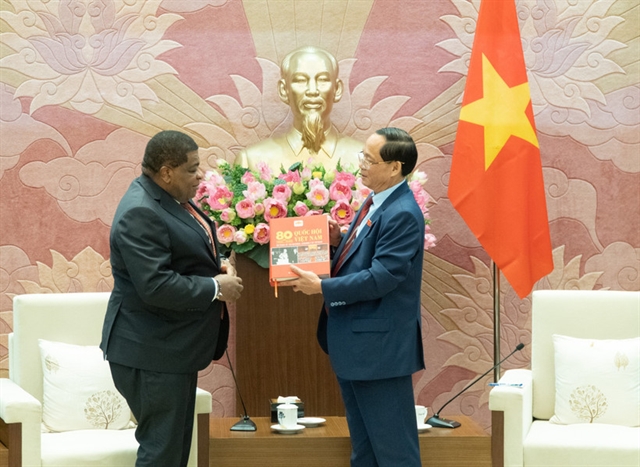 Economy
Economy

.jpg) |
| Garment production at March 29 Textile - Garment Joint Stock Company in Đà Nẵng City. —VNA/VNS Photo Lê Lâm |
HCM CITY — Việt Nam's textile and garment industry is witnessing a positive recovery and has an opportunity to make breakthroughs, but many firms are faced with new challenges in meeting market and customer demand.
To take advantage of the opportunity to improve Việt Nam's textile and garment position is a problem that businesses must quickly overcome.
The Việt Nam Textile and Apparel Association (Vitas) reported that the country's textile and garment export turnover was estimated at nearly US$4.3 billion last month, bringing the export turnover to $28.3 billion in the first eight months of the year, a year-on-year increase of 6.2 per cent.
This is a great opportunity for the sector to recover growth and create a new export milestone this year, said Vitas chairman Vũ Đức Giang.
Việt Nam's textile and garment export product lines have grown from four to 14 per cent in the eight months, some lines increased by over 20 per cent.
This was the result of the shift of orders from a number of other countries to Việt Nam in recent times due to fluctuations in many regions such as the US-China trade war, military conflicts in Europe and most recently, internal instability in Bangladesh, said Giang.
The long-term strategy of Việt Nam's textile and garment industry was to actively diversify product lines, meet the needs of many different customer segments and expand export markets, he added.
The growth in orders and new partners also comes with the need to meet new purchasing strategies.
Since the decline in demand after the COVID-19 pandemic, brands and distribution systems now tend to order from factories and ship directly to distribution or retail stores without going through warehouses as before.
This requires businesses to change their production strategies, not requiring too many workers but having to produce orders for quick delivery within one to two months instead of six months to one year as before.
Giang said: "The textile and garment industry needs to promote chain linkages from raw materials, machinery and equipment, design to product trading to co-ordinate orders.
"With production activities, it is necessary to take advantage of technology and artificial intelligence to improve productivity, quality as well as create different values for products.
"If we do well in the period when the global textile and garment supply chain is 'shifting', the position and market share of Vietnamese textile and garment in the international market will be significantly improved, creating momentum for long-term development."
Nguyễn Văn Hoàng, general director of Đồng Tiến JSC, said orders from Vietnamese textile and garment enterprises were very good although in terms of total demand for textile and garment in the world, it had not grown much.
The fact that Việt Nam received many orders this year was due to the shift of orders from other countries, typically China.
However, the shift of orders is not only happening between countries but also within Vietnamese enterprises.
Specifically, customers and partners are also stepping up the "purification" of factories and processing plants with old equipment and technology to order green factories that meet ESG standards.
At the same time, many partners had also switched from ordering early and in large quantities to selling as soon as they order to reduce inventory, he added.
Hoàng said: “The new requirements of customers are legitimate and follow the general trend of the world.
"Enterprises that quickly apply technology, automate and green their factories from raw materials and fuel will continue to receive more orders and participate more deeply in the global textile and garment supply chain. On the contrary, factories that are slow to adapt will be eliminated from the 'game'.
"This is a challenge but also a driving force for manufacturing enterprises in general, and textile and garment enterprises in particular, to green their factories.” — VNS




